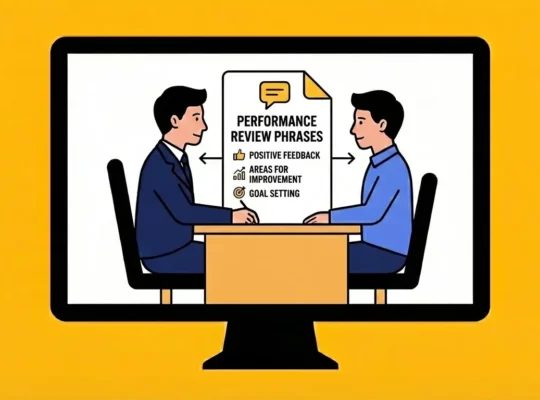Employee engagement programs are essential for building a thriving team and ensuring organizational success. Highly engaged teams are 22% more profitable and 21% more productive than those with weak engagement. These programs not only improve employee satisfaction but also foster a positive work environment where everyone feels valued and motivated. Review.jobs highlights the significance of these initiatives in driving company growth and success. By prioritizing employee engagement, companies can create a culture of excellence and collaboration, leading to sustained profitability and productivity. Let’s dive into the importance of employee engagement and explore the top 10 programs that can transform your workplace.
Table of Contents:
I. Employee Engagement Programs: Definition and Purpose
II. Benefits Of Employee Engagement Programs: For Employees and Employers
III. 10 Employee Engagement Programs to Drive Performance and Satisfaction
1. Employee Feedback Mechanisms
2. Recognition and Rewards Programs
3. Professional Development Opportunities
4. Health and Wellness Initiatives
5. Flexible Work Arrangements
6. Strong Onboarding and Integration Programs
7. Open Communication Channels
8. Social and Team-Building Activities
9. Corporate Social Responsibility Initiatives
10. Mentorship and Coaching Programs
IV. Best Practices for Implementing Employee Engagement Programs
I. Employee Engagement Programs: Definition and Purpose
What is Employee Engagement?
Employee engagement is the emotional commitment and enthusiasm an employee feels towards their job, team, and organization. Engaged employees are those who are fully involved in, and enthusiastic about, their work. They are motivated to contribute to the success of their company and go the extra mile to achieve their goals. This engagement is not just about job satisfaction; it’s about feeling a deep connection to one’s role and the organization’s overall mission.
Key Objectives of Engagement Programs
At the heart of every employee engagement program lies the aspiration of fostering a work environment that motivates, values, and inspires commitment from its workforce. These programs aim to achieve several key goals:
- Boost employee morale: Recognizing employee success as a means of recognition and encouragement.
- Enhance productivity: Encouraging employees to be more efficient and effective in their roles.
- Foster a positive company culture: Building a supportive and collaborative environment where team members thrive.
- Promote retention: Reducing turnover rates by making employees feel engaged and satisfied with their work. For more, explore our Top 12 Employee Retention Software for Workforce Stability.
- Support personal and professional growth: Offering opportunities for continuous learning and career development.
II. Benefits Of Employee Engagement Programs: For Employees and Employers
Employee engagement programs offer significant benefits for employees and employers alike. Here’s a detailed look at how these programs can positively impact both parties:
| Benefits for Employees | Benefits for Employers |
| Increased job satisfaction: Engaged employees enjoy their work and feel more fulfilled, both professionally and personally. | Lower turnover: Companies with high employee engagement score lower turnover rates, saving costs on hiring and training new staff. |
| Enhanced work-life balance: Engagement programs often include initiatives that help employees manage their personal and professional lives more effectively. | Reduced absenteeism: High employee engagement also leads to lower absenteeism, ensuring that employees are more present and productive. |
| Improved mental health: Programs that focus on well-being contribute to better mental health and reduced stress levels. | Higher productivity: Engaged employees are more motivated and efficient, leading to increased overall productivity. |
| Growth opportunities: Professional development programs help employees advance their careers and acquire new skills. | Better company culture: Engagement initiatives foster a positive and cohesive work environment, enhancing collaboration and teamwork. |
| Feeling valued: Recognition and rewards programs make employees feel appreciated and important to the organization. | Increased profitability: Engaged teams contribute to higher profitability due to their commitment and performance. |
| Stronger connections with team members: Social and team-building activities enhance relationships and teamwork. | Improved employee retention: When employees are engaged, they are more likely to stay with the company long-term, ensuring stability and continuity. |
III. 10 Employee Engagement Programs to Drive Performance and Satisfaction
1. Employee Feedback Mechanisms
Gathering Employee Insights with Review.jobs
Gathering employee insights is essential for creating a culture of transparency and continuous improvement. Review.jobs is a certified employee review management platform designed to help employers collect authentic feedback, source actionable insights, and refine their employer brand. By utilizing effective feedback mechanisms, companies can better understand employee needs and make informed decisions to enhance the work environment.
Examples:
There are several ways to gather employee feedback, both in-person and online:
- Employee Reviews: Encouraging employees to share their experiences and feedback anonymously through structured reviews provides valuable insights into their perceptions and satisfaction levels.
- Suggestion Boxes: Implementing suggestion boxes, both physical and digital, allows employees to anonymously share ideas and concerns, fostering a sense of involvement and ownership.
- Regular Check-ins: Scheduling regular check-ins with employees allows them to discuss their progress, challenges, and suggestions for improvement, ensuring ongoing communication and support.
2. Recognition and Rewards Programs
Importance of Recognizing Employee Efforts
Recognizing and rewarding employee efforts is crucial for maintaining high morale and motivation within the workplace. When employees feel acknowledged and appreciated, their commitment and productivity levels soar. Yet, a staggering 61% of employees report a lack of regular recognition at work, and 23% feel underappreciated. This highlights the critical need for consistent recognition programs that validate employees’ hard work and dedication.
Examples:
Implementing effective recognition programs can be straightforward. Here are some practical examples:
- Employee of the Month: Highlighting a standout employee each month can motivate others and create a culture of excellence.
- Thank-You Cards: Simple handwritten notes of appreciation can make a bigger impact than you would think!
- Public Acknowledgments: Recognizing achievements in team meetings or company-wide communications boosts visibility and morale.
3. Professional Development Opportunities
Continuous Learning and Skill Development
Providing continuous learning and skill development opportunities is essential for employee growth and satisfaction. Employees who have access to professional development resources are more competent, confident, and committed to their roles.
Examples:
There are various ways to facilitate professional development:
- Workshops: Organize regular workshops targeting employees’ needs to enhance skills and proficiency.
- Online Courses: Offer access to online courses that allow employees to learn at their own pace.
- Career Pathing: Create clear career paths that outline potential growth opportunities within the company.
4. Health and Wellness Initiatives
Promoting Physical and Mental Health
Promoting physical and mental health through wellness initiatives is essential for maintaining a happy and productive workforce. Employees who feel supported in their health endeavors are more likely to be engaged and committed to their roles. Companies that prioritize wellness see a significant increase in job satisfaction, with studies indicating that nearly 90% of employees at companies with wellness initiatives report higher job satisfaction and are more likely to recommend their employer.
Examples:
Implementing effective health and wellness programs can take many forms:
- Yoga Classes: Offering yoga sessions can help employees manage stress and improve physical well-being.
- Mental Health Resources: Providing access to mental health resources, such as counseling services or stress management workshops, supports employees’ emotional well-being.
- Fitness Challenges: Organizing fitness challenges encourages healthy competition and motivates employees to stay active.
5. Flexible Work Arrangements
Adapting to Modern Work-Life Balance Needs
Flexible work arrangements are becoming increasingly important as employees seek better work-life balance. Adapting to these needs can significantly enhance employee satisfaction and retention. By offering flexible work options, companies demonstrate trust and support for their employees’ personal lives, which in turn fosters loyalty and engagement.
Examples:
There are several ways to implement flexible work arrangements:
- Remote Work Options: Allowing employees to work from home or other remote locations provides greater flexibility and reduces commute stress.
- Flexible Hours: Offering flexible working hours enables employees to tailor their schedules to fit their personal needs, such as family commitments or personal interests.
- Compressed Work Weeks: Implementing compressed work weeks, where employees work longer hours over fewer days, can provide extended periods off and improve overall work-life balance.
6. Strong Onboarding and Integration Programs
Importance of a Positive First Impression
A positive first impression is crucial for new employees. Strong onboarding and integration programs help new hires feel welcomed, valued, and prepared to contribute to the team. In fact, the Society for Human Resource Management (SHRM) found that new hires are 50% more productive when organizations implement a standardized onboarding process. These organizations score new hire retention rates that are 82% higher than those with weaker processes.
Make sure to not overlook remote employee onboarding! It is as, if not more, crucial than onsite onboarding due to the complications that may arise from the physical distance. But fear not! Our detailed guide will run you through the 6 steps to follow for the successful onboarding of your remote employees.
Examples:
Effective onboarding programs can include various components:
- Welcome Kits: Providing new employees with a welcome kit that includes company-branded items, essential tools, and information can make them feel appreciated from day one.
- Buddy Systems: Pairing new hires with experienced team members helps them navigate their new roles and integrate into the company culture more smoothly.
- Comprehensive Orientation: Offering a detailed orientation program that covers company policies, procedures, and culture ensures that new employees have all the information they need to succeed.
7. Open Communication Channels
Encouraging Transparent and Two-Way Communication
Transparent and two-way communication is essential for building trust and fostering collaboration within an organization. When employees feel that their voices are heard and valued, they are more likely to be engaged and committed to their work. Encouraging open communication channels ensures that employees can share their ideas, feedback, and concerns freely, creating a more inclusive and dynamic work environment.
Examples:
Implementing open communication channels can take various forms:
- Regular Feedback Sessions: Scheduling consistent feedback sessions allows employees to discuss their performance, share ideas, and receive guidance.
- Open-Door Policies: Encouraging leaders to maintain open-door policies ensures that employees feel comfortable approaching them with any issues or suggestions.
- Internal Communication Platforms: Utilizing internal communication platforms, among other internal communication strategies, can make a big difference. Platforms such as chat tools or intranet systems, facilitate real-time communication and collaboration among team members.
8. Social and Team-Building Activities
Fostering Team Spirit and Collaboration
Social and team-building activities are essential for fostering team spirit and collaboration among employees. These activities help break down barriers, build trust, and create a sense of camaraderie that extends beyond the workplace. When employees engage in social and team-building events, they form stronger bonds with their colleagues, which enhances teamwork and communication during work hours.
Examples:
Here are some effective examples of social and team-building activities:
- Team Outings: Organizing outings such as hiking trips, escape rooms, or cultural tours can provide a refreshing change of scenery and a chance for employees to bond in a relaxed environment.
- Office Games: Introducing fun games and competitions in the office, like trivia contests or scavenger hunts, can boost morale and encourage friendly competition.
- Social Events: Hosting regular social events, such as holiday parties, happy hours, or family picnics, helps employees connect on a personal level and strengthens the sense of community within the company.
9. Corporate Social Responsibility Initiatives
Engaging Employees in Community Service
Corporate social responsibility (CSR) initiatives play a crucial role in engaging employees by involving them in community service. Participating in CSR activities gives employees a sense of purpose and pride, knowing that their efforts are making a positive impact on society. These initiatives also help employees feel more connected to their company’s values and mission.
Examples:
Here are three ways to implement CSR initiatives:
- Volunteer Programs: Encouraging employees to volunteer for local charities or community projects fosters a sense of giving back and strengthens team bonds.
- Matching Gift Programs: Offering matching gift programs, where the company matches employee donations to charitable organizations, shows commitment to social causes, and enhances employee engagement.
- Environmental Initiatives: Involving employees in environmental initiatives, such as tree planting, recycling drives, or clean-up campaigns, promotes sustainability and reinforces the company’s dedication to protecting the environment.
10. Mentorship and Coaching Programs
Supporting Professional Growth and Development
Mentorship and coaching programs are vital for supporting professional growth and development within an organization. These programs provide employees with guidance, feedback, and opportunities to enhance their skills and advance their careers. By pairing experienced mentors with less experienced mentees or offering professional coaching sessions, companies can foster a culture of continuous learning and development.
Examples:
Here are some effective ways to implement mentorship and coaching programs:
- Mentor-Mentee Pairings: Assigning mentors to new or junior employees helps them navigate their roles, build confidence, and develop necessary skills.
- Coaching Sessions: Providing one-on-one coaching sessions with professional coaches can help employees set and achieve personal and professional goals.
- Leadership Development Programs: Offering leadership development programs prepares employees for future leadership roles, equipping them with the skills and knowledge needed to lead effectively.
IV. Best Practices for Implementing Employee Engagement Programs
1. Tailoring Programs to Company Culture
Aligning engagement programs with the unique culture of your organization is crucial for their success. Understanding the core values, beliefs, and practices that define your company helps in designing initiatives that resonate with employees. For example, a company that values innovation might implement brainstorming sessions and hackathons, while a company focused on community involvement may emphasize volunteer opportunities and social responsibility projects. By tailoring programs to fit the company’s culture, you ensure greater employee buy-in and participation.
2. Involving Employees in Program Design
Employee involvement in the design and development of engagement programs is essential for their effectiveness. Gathering input from employees through surveys, focus groups, and feedback sessions ensures that the programs address their needs and preferences. When employees have a say in the creation of these initiatives, they are more likely to feel invested and enthusiastic about participating. This inclusive approach not only empowers employees but also enhances the relevance and impact of the programs.
3. Setting Clear Goals and Objectives
Defining clear goals and objectives for each engagement program is key to its success. Establishing what you aim to achieve, such as improving employee satisfaction, boosting productivity, or fostering team collaboration, provides direction and focus. Setting specific, measurable, achievable, relevant, and time-bound (SMART) goals helps track progress and assess the effectiveness of the programs. For instance, a goal might be to increase participation in wellness activities by 20% over the next six months, providing a clear benchmark for success.
4. Regular Assessment and Adaptation
Continuous assessment and adaptation are vital to maintaining the relevance and effectiveness of engagement programs. Regularly evaluating the success of each initiative through employee feedback, surveys, and performance metrics allows you to identify what works and what needs improvement. Being open to change and willing to adapt programs based on these insights ensures they remain impactful and aligned with the evolving needs of the organization. This proactive approach helps sustain high levels of employee engagement and satisfaction.
5. Celebrating Milestones and Achievements
Recognizing and celebrating milestones and achievements is a powerful way to motivate and engage employees. Acknowledging progress and accomplishments, whether individual or team-based, reinforces positive behaviors and demonstrates that the organization values its employees’ contributions. Celebrations can take various forms, such as public recognition, awards, team outings, or special events. These moments of recognition boost morale, strengthen team bonds, and foster a sense of pride and belonging within the company.
Implementing the right employee engagement programs can transform your team and enhance your employer image. The ten programs we discussed—recognition and rewards, professional development, health and wellness, flexible work arrangements, onboarding, open communication, social activities, CSR initiatives, mentorship, and feedback mechanisms—are proven to boost performance and satisfaction. Building a thriving team requires commitment and creativity, but the results are worth the effort. Begin integrating these initiatives today to create a more engaged, productive, and loyal workforce. For more insights and tools on improving employee engagement, visit Review.jobs and start transforming your workplace.





